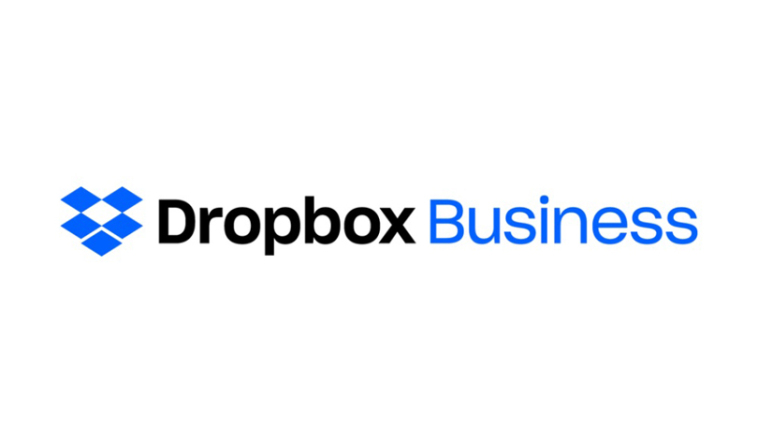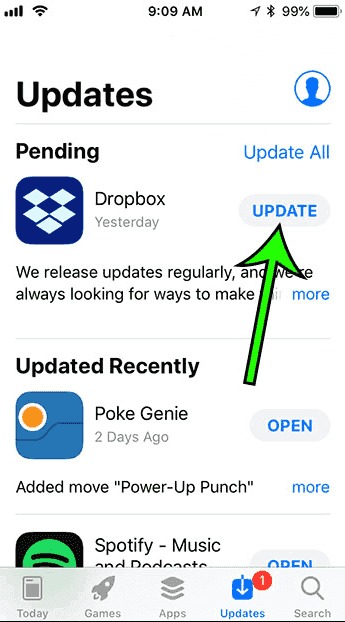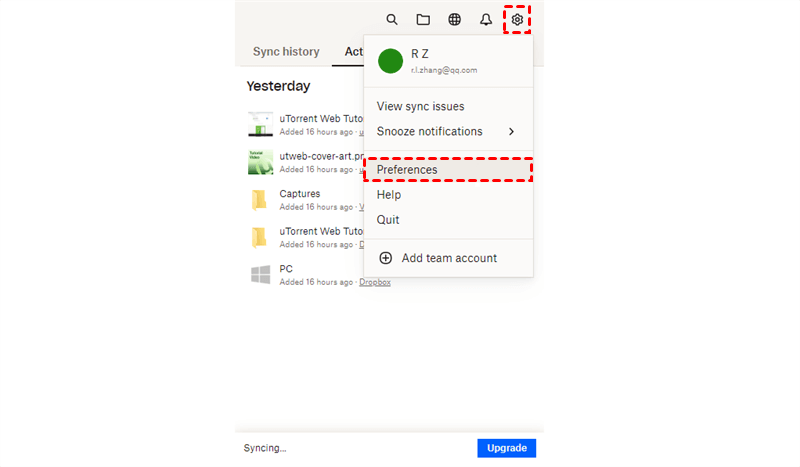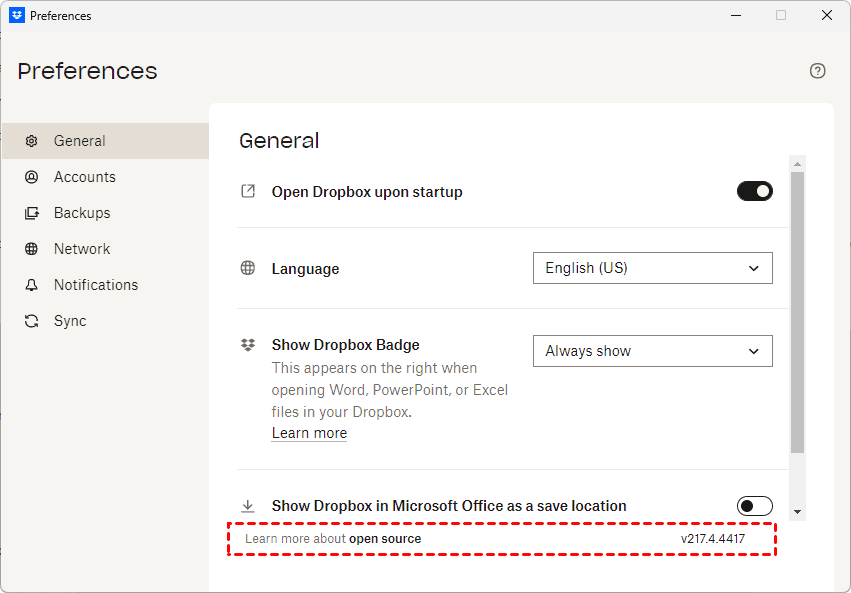Staying up to date with software updates is pivotal for ensuring optimal performance and security. Dropbox, a popular cloud storage service, regularly releases updates to improve functionality, fix bugs, and enhance security. In this comprehensive guide, we'll explore everything you need to know about how to update Dropbox across various platforms and devices.
Why Updating Dropbox Matters?
Before probing into the specifics of updating Dropbox, it's essential to understand why staying up to date is important. Software updates frequently include pivotal security patches that protect your data from vulnerabilities and cyber threats. Additionally, updates may introduce new features or advancements that enhance the user experience and productivity. By keeping Dropbox updated, you ensure that you are getting the most out of the service while safeguarding your files and information.
How to Update Dropbox on Windows, Mac, iPhone & Android
Updating Dropbox app is quite simple, and it can be done on different devices and operating systems. Here's how to update Dropbox on various platforms, including Windows, Mac, and Android:
How to Update the Dropbox Mobile App on Android or iPhone
If you want to use the latest version of the Dropbox app on your iPhone or Android, follow these steps to update your Dropbox:
1. Open the App Store (iOS) or Google Play Store (Android) on your mobile device.
2. Search for "Dropbox".
3. If an update is available for the Dropbox app, you will see an "Update" button next to it.
4. Tap on the "Update" button to download and install the latest version of the Dropbox app.
5. Once the update is complete, open the Dropbox app to access the new features and improvements.
Keeping the Dropbox mobile app updated ensures that you can access your files and documents on the go with the latest features and enhancements.
How to Update Dropbox on Windows or Mac
As long as you installed the Dropbox app on your Windows or Mac computer, the Dropbox desktop app will automatically update to the latest version by the operating system network settings. On the other hand, you can also update the Dropbox app manually by downloading the latest version of the Dropbox app on the download page and installing it.
However, you can't stop the Dropbox auto-update process by any means.
Check Which Dropbox Version You Installed
If you would like to check which version of the Dropbox desktop app you installed, please try the following steps:
1. Please launch the Dropbox app on your Windows or Mac computer.
2. Tap the Dropbox icon on the system tray in Windows, or tap it on the menu bar in Mac.
3. Click the profile image on the top right, and choose Preferences from the list.
4. Select General on the left side, you will find the Dropbox version information on the bottom show like this.
How to Update Dropbox Files on PC?
To update Dropbox files on your PC, you'll be required to guarantee that the Dropbox desktop application is installed and running on your computer. Take these straightforward steps to update your Dropbox files:
- Open the Dropbox Desktop App: Find and open the Dropbox desktop application on your PC. You can regularly discover it in your list of installed programs or by looking for "Dropbox" in the Windows search bar.
- Sign In to Your Dropbox Account: If you're not already signed in, enter your Dropbox email address and password to log in to your account.
- Sync Your Files: Once you're logged in, the Dropbox app will automatically sync your files and folders to guarantee they're up to date with the most recent changes. You'll see a status symbol showing the sync progress in the system tray or taskbar.
- Verify File Updates: Once the match-up is total, confirm that your Dropbox files have been updated by checking the file timestamps or opening them to affirm any changes. If you're working with shared folders, make sure that all collaborators have access to the updated files.
Now, you can easily update your Dropbox files on your PC and guarantee that you always have access to the latest versions of your documents, photos, and other files stored in Dropbox.
Final Checks and Best Practices
After updating Dropbox, it's essential to verify that the update was successful and that you're running the latest version of the app. Here are some final checks and best practices to ensure a smooth update process:
- Confirm that the Dropbox app is functioning correctly after the update.
- Check for any new features or advancements introduced in the latest version of Dropbox.
- Regularly check for updates and install them promptly to stay current with the latest features and security enhancements.
By following these guidelines, you can ensure that your Dropbox app is always up to date and optimized for performance. Stay ahead of the wind and enjoy the benefits of the latest features and improvements that Dropbox has to offer.
Common Issues and Troubleshooting
While updating Dropbox is generally a smooth process, you may encounter some common issues along the way. Here are some troubleshooting tips to help you address any update problems:
Q: Why can not I update Dropbox on my device?
A: If you can't update Dropbox on your device, make sure that you have a stable internet connection and sufficient storage space available. Also, check for any pending updates on your devices.
Q: What to do if I'm getting an error message when trying to update Dropbox?
A: If you encounter an error while updating Dropbox, try restarting your device and also try the update again. However, you may need to uninstall and reinstall the Dropbox app to resolve any software conflicts, If the issue persists.
Q: Will updating Dropbox affect my files and settings?
A: Updating Dropbox shouldn't affect your files or settings. still, it's always a good idea to back up any important data before performing an update, just to be safe.
Q: How frequently should I update Dropbox?
A: Dropbox releases updates regularly to introduce new features, improvements, and security patches. It's recommended to enable automatic updates for the Dropbox app to ensure that you are always running the latest version.
Q: Can I return to a former version of Dropbox if I encounter issues with the update?
A: While it's generally not recommended to revert to a former version of Dropbox, you can communicate with Dropbox support for assistance if you encounter any issues with the update. They may be able to provide guidance or troubleshooting steps to help resolve the issue.
Q: Do I need to update Dropbox if I am using the web version?
A: No, you don't need to manually modernize the web version of Dropbox. Updates are applied automatically to the web version, so you will always have access to the latest features and improvements whenever you log in.
Backup Dropbox Files Regularly
Any files should be backed up, so it's strongly recommended to backup your Dropbox data using the comprehensive multi-cloud storage manager - MultCloud. You can use it to migrate from one Dropbox account to another or transfer Dropbox to Google Drive, OneDrive, Amazon S3, pCloud, SharePoint, Box, Box for Business, Shared Drive, Shared with Me, Google Workspace, Google Photos, FTP, NAS, MySQL, ownCloud, Wasabi, Egnyte, ADrive, and more.
Except for the cloud migration, you can archive emails to PDF with all attachments all at once, remote upload files to Dropbox, move Dropbox personal files to Dropbox for business, and many more. So why not give it a chance and backup your Dropbox files quickly and safely?

- Cloud Transfer: Move one cloud data to another without downloading and re-upload.
- Cloud Sync: Sync data across clouds seamlessly in real-time.
- Cloud Backup: Dynamically backup and restore files between clouds.
- Instagram Downloader: Download Instagram videos, photos, reels, and stories to local device or remotely upload them to your clouds.
- Email Migration: You can directly back up and save Gmail emails as PDFs to your computer or cloud drive in bulk.
- Manage all cloud accounts in one place: Connect all your clouds to MultCloud and you'll find it so easy to access and manage multiple cloud storage files with a single login.
MultCloud Supports Clouds
-
Google Drive
-
Google Workspace
-
OneDrive
-
OneDrive for Business
-
SharePoint
-
Dropbox
-
Dropbox Business
-
MEGA
-
Google Photos
-
iCloud Photos
-
FTP
-
box
-
box for Business
-
pCloud
-
Baidu
-
Flickr
-
HiDrive
-
Yandex
-
NAS
-
WebDAV
-
MediaFire
-
iCloud Drive
-
WEB.DE
-
Evernote
-
Amazon S3
-
Wasabi
-
ownCloud
-
MySQL
-
Egnyte
-
Putio
-
ADrive
-
SugarSync
-
Backblaze
-
CloudMe
-
MyDrive
-
Cubby



